There's nothing more humbling than arriving at a foreign hotel, pulling out your dead phone, and realising your plug doesn't fit the socket. As someone who's had a laptop gasp its last breath at an airport in my recent trip to Taiwan, I can confidently say that a good universal travel adapter is worth its weight in gold (or at least a few extra gigs of international roaming).
I explored five travel adapters that aim to solve this dilemma. While I won't say I've personally tested every socket in every country (that would be quite the carbon footprint), I took a deep dive into features, practicality, and what travellers are raving about. Let's plug in:
Top 5 Universal Travel Adapters
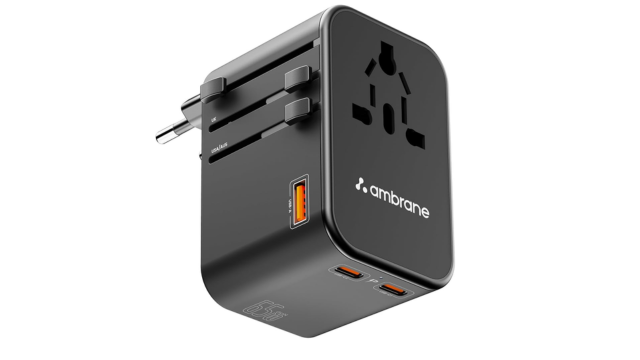
What caught my attention about the Ambrane ATA-02 is its 65W GaN technology. This thing isn't just for topping off a phone; it can actually charge laptops, thanks to its dual USB-C ports and a USB-A port. It's basically a mini power station in adapter form. If you're the kind of person who brings three devices to breakfast, this one's for you.
What's cool:
- 65W output means you can even juice up a MacBook.
- GaN tech keeps it cool (literally and thermally).
- Four total ports = fewer fights over the socket.
What to watch for:
- A bit bulkier than your typical charger, but it does replace several.
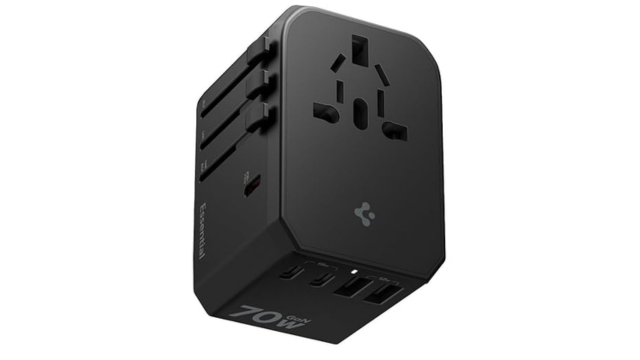
The Spigen adapter stands out with its protective EVA travel case—a small but thoughtful detail. It offers up to 70W fast charging and supports 2400W output. That's high-end hotel hair dryer compatible. Perfect for those who like their tech smart and their cable management cleaner than their inbox.
Pros:
- Travel case = neat freaks rejoice.
- Three USB-C and two USB-A ports—because who travels with just one gadget?
- Smart fuse system offers peace of mind (nobody likes sparks mid-siesta).
Cons:
- On the pricier end, but the features justify it.
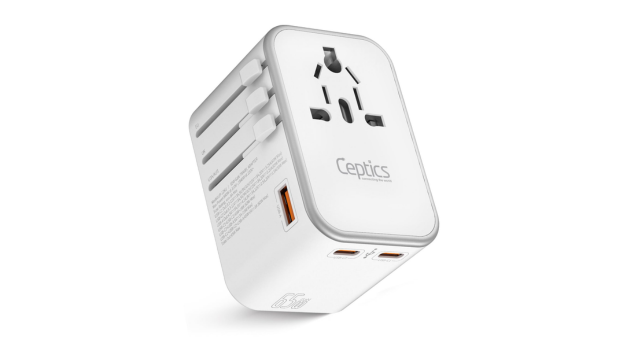
Designed in the USA, the Ceptics adapter is about reliability and safety. Think of it as the Volvo of travel adapters: no drama, just performance. If you're travelling to a country where the language confuses you, at least your power situation won't.
Perks:
- Four ports: USB, USB-C, and a universal input.
- Certified with surge and shock protection (parents, take note).
- Comes with an extra fuse, which speaks to just how prepared it wants you to be.
Limitations:
- Doesn't convert voltage. Like most of these, it's not for your curling iron unless it's dual voltage.
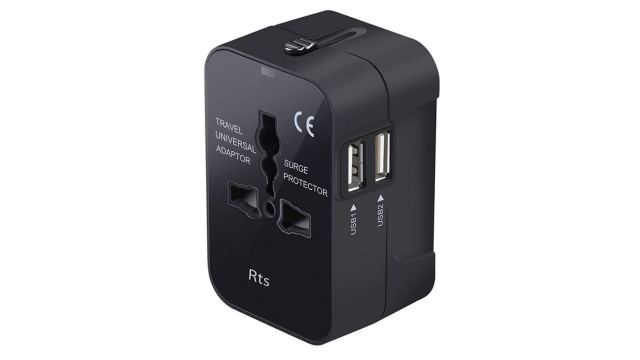
If simplicity is your vibe, the rts UTA01 keeps things old-school (but in a good way). It's basic, compact, and does what it says: adapts plugs from 150+ countries and lets you charge two devices with USB ports. Great for students, backpackers, or anyone who just needs reliable power socket without extra frills.
Strengths:
- Inexpensive and lightweight.
- Folding plug design saves space in even the tightest backpacks.
- Built-in safety shutters for peace of mind.
Trade-offs:
- No fast charging or laptop support.
- Best suited for phones, tablets, and low-power devices.
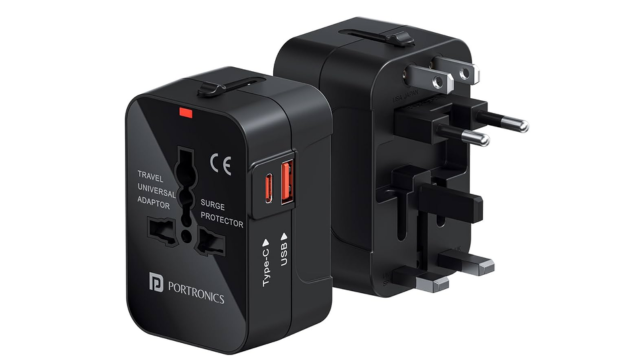
The Juicemate is as fun to use as it is to say. With a combo of 18W USB-A and 20W USB-C PD output, this one packs both aesthetic appeal and practical power.
Why it works:
- Durable PC+ABS construction = long-term travel companion.
- Fuse protection keeps your devices safe from sketchy hostel outlets.
- Sleek, colourful design that doesn't scream "tech nerd."
What I liked:
- It balances design and function—looks good, works great.
- Super lightweight, yet durable enough for rough handling.
- Perfect for Instagram-savvy globetrotters who want function and fashion in one.
Final Thoughts: One Adapter to Rule Them All?
There's no one-size-fits-all in the world of travel adapters—unless you count the number of interchangeable plugs. If you're lugging laptops and tablets, the Ambrane and Spigen are solid bets. For budget-friendly reliability, the rts or Portronics will serve you well. And Ceptics? It's a power user's dream with its safety-first mindset.
Whichever you choose, just make sure your device is dual voltage—or you might be charging your camera with regret.
Methodology Note
The recommendations and insights shared in this article are the result of a carefully structured evaluation process conducted by the editorial team at The Hook. To ensure the list truly reflects what Indian consumers need in 2025, we based our selections on a mix of qualitative and quantitative research.
We took into account brand reputation and reliability, with a focus on manufacturers known for consistent product quality and innovation in the Indian market. Just as important was each brand's after-sales service network.
We also studied user reviews and feedback posted on trusted e-commerce platforms like Flipkart and Amazon, as well as consumer forums and Reddit threads, to understand real-world experiences beyond the spec sheets.
Finally, the models featured were shortlisted after detailed brainstorming, internal discussions, and editorial analysis—balancing technical performance, design, pricing, energy efficiency, and everyday practicality. The goal: to offer readers a list that's not just data-driven, but genuinely useful when making a buying decision for their home.





















